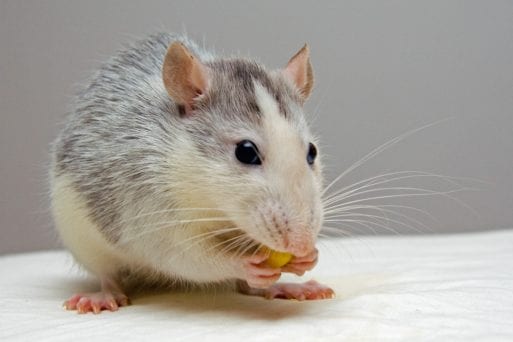
Numerous treatments that address Alzheimer’s-related conditions
in mice have failed on humans.
Scrolling through the headlines, it’s easy to come away with the impression that there are major breakthroughs in Alzheimer’s research happening near-daily. Yet as a recent paper in PLOS Biology points out, such headlines are often misleading. Much of this research was conducted on mice, with no indication that it could lead to similar gains in human subjects. And as mice physiology differs significantly from that of humans, such discoveries may not even be applicable.
Some 5.8 million people suffer from Alzheimer’s disease in the United States, with minorities and women at greater risk of developing the disease. As the aging population continues to grow and people live longer, that number is projected to nearly triple to 14 million by 2060, creating an even greater strain on caregivers and the U.S. healthcare system. Yet while scientists are under growing pressure to develop a treatment, transgenic mice may not provide the answers they’ve been looking for.
“Mice don’t get Alzheimer’s disease or Parkinson’s disease,” psychiatrist Susan Molchan, a former medical reviewer at the FDA, told HealthNewsReview.org. “They’ve cured mouseheimer’s disease I don’t know how many times now.”
There’s growing evidence that Alzheimer’s-like diseases do exist in animals with long lives, such as pets or animals living in sanctuaries, who sometimes display molecular and microscopic changes similar to people. However, lab mice don’t usually fall into this category. Instead, researchers have created transgenic mice with a single gene mutation associated with an inherited — and less common — form of early Alzheimer’s, who then develop plaques and cognitive deficits. Yet while drugs have been successfully developed to treat such hallmarks of the disease in mice, this hasn’t transferred to treating Alzheimer’s in humans.
What has Research on Mice Done for Alzheimer’s?

Alzheimer’s research on mice has advanced understanding.
So far, transgenic mice have mostly given researchers a better idea of how Alzheimer’s works. Scientists learned, for example, “that mutations associated with inherited Alzheimer’s disease favor the production of a variant of amyloid-β called amyloid-β(1–42), which is two amino acids longer than the usual form and aggregates more readily,” according to Nature. Yet despite the millions of dollars invested in research on mice and rats, and numerous ongoing studies, no human drugs have resulted.
“While mouse models have provided astounding new insights into disease mechanisms,” neuroscientist Bruce Lamb of Indiana University School of Medicine told Nature, “They don’t reflect the entire biology of the disease.” Now, some researchers are considering focusing Alzheimer’s research on non-human primates such as rhesus macaques and marmosets instead, Nature reported.
In the meantime, authors of the PLOS Biology paper argue that both news writers and scientific researchers need to more carefully craft their headlines, so as not to create unfounded hope in readers. (James Heathers, a research scientist at Northwestern University, even launched a Twitter account called @justsaysinmice to draw attention to the issue.) The study analyzed hundreds of scientific papers to determine whether their titles impacted news reporters’ choice of headlines — and found that they did. When scientific articles mentioned mice in the title, news reporters were more than four-fold as likely to do so as well.

 Alzheimer’s Research on Mice is Often Misleading
Alzheimer’s Research on Mice is Often Misleading


 How Dare You Die Now!
How Dare You Die Now!
 Debating Medical Aid in Dying
Debating Medical Aid in Dying
 “Help Me, Helen”
“Help Me, Helen”














